If you’re a small team—or maybe a team of one—social media can feel like just one more thing on an already packed to-do list. Here’s some simple, effective strategies to help you focus your time on social media that actually works.
Seven Tips for Better Social Media
1) Make a strong first impression
How many times have you heard first impressions are everything? Social media is no different. Each new social media profile is like another entry in the phone book (remember those?). Make it simple for people who see your “listing” to learn about your organization’s mission and how to get involved.
- Update your cover photo to highlight a current campaign or initiative
- Refresh the link in your bio to point to your most important resource—whether that’s your website, email sign-up, or Linktree.
- Pin a post that clearly showcases your mission or a key update about your work.
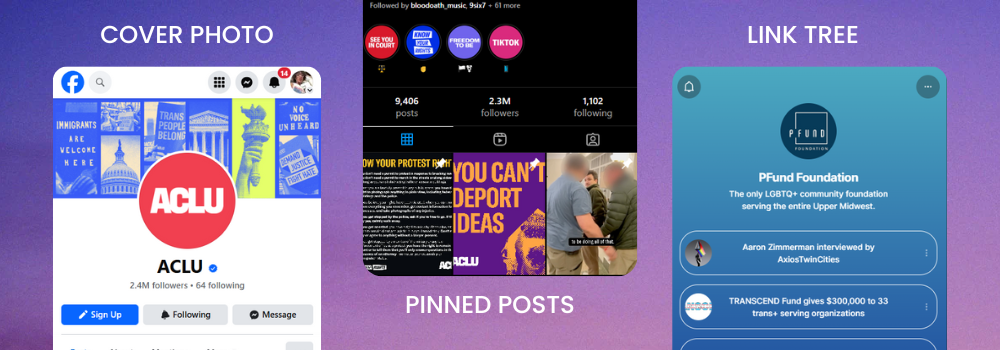
2) Post like a fan, not like a brand
Social media is a place for connection—not perfection.
Try writing like a passionate supporter of your own work. Imagine you’re texting a friend or posting in a group chat. Share what excites you!
Show behind-the-scenes moments, little wins, and human voices. Authenticity builds trust. Passion invites others to join in.
3) Have a designated photographer
You don’t need fancy gear, just someone who’s always ready to document the moment. Whether it’s a phone or a fancy DSLR camera, what matters most is consistency.
- Make it a habit. You should aim to take photos or short videos at every event. Think like the “mom friend” and capture candid moments, group shots, and behind-the-scenes highlights.
- Assign the role. Having one person responsible for documentation ensures that great moments don’t get missed. Know who’s in charge ahead of time. Ideally, find someone who can make it their primary responsibility at an event so they don’t have to juggle many priorities.
- Stay organized. Create a shared online Google folder (it’s free for nonprofits!) where you can store photos and videos so anyone on your team can easily access and use them later.
4) Follow the 80/20 Rule
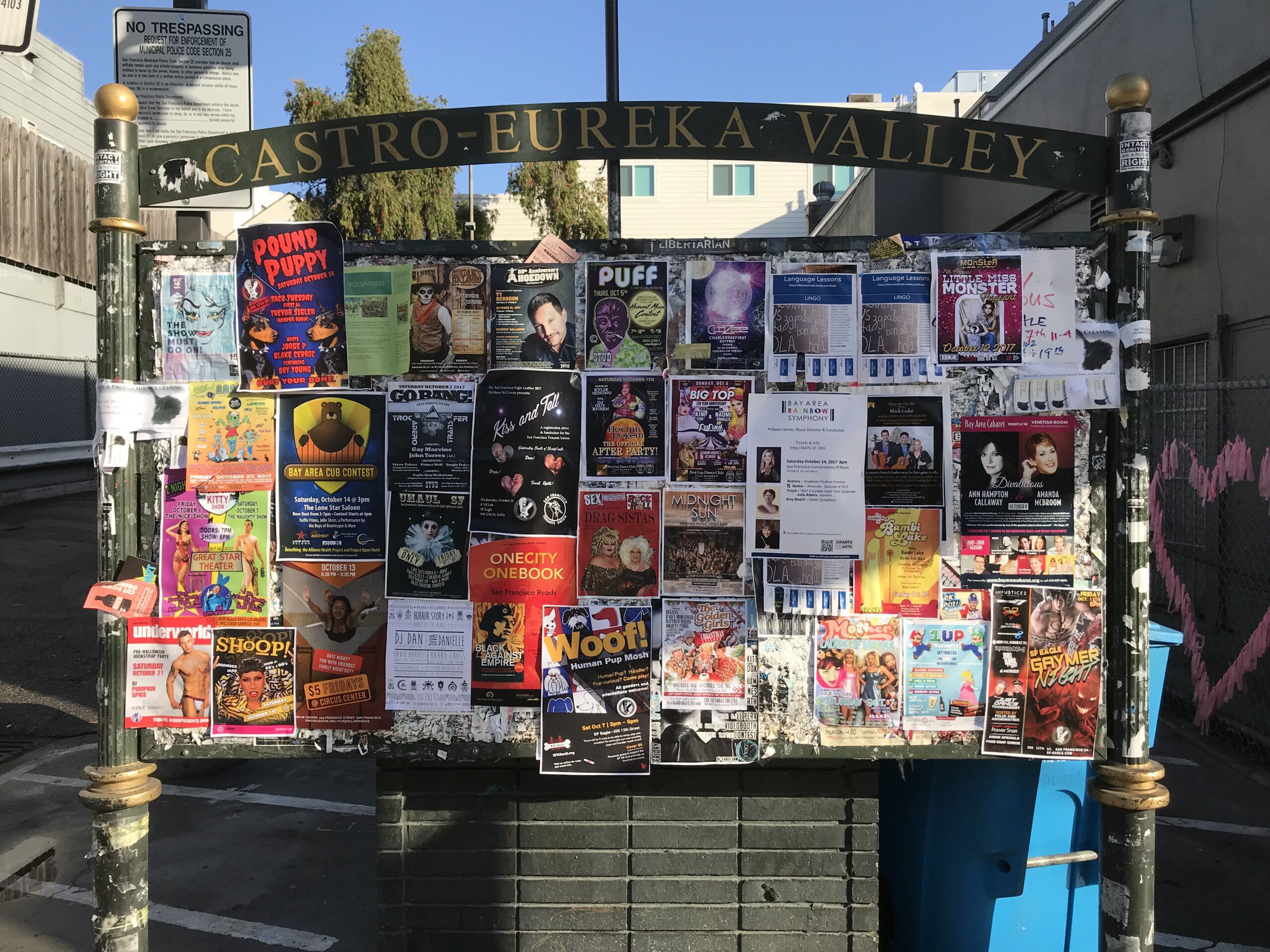
Remember bulletin boards in school, coffee shops, and local libraries? They don’t include information just about school, coffee or books.
So, your social media channels should not include information just about your organization.
The 80/20 rule suggests that 80% of your content should inform, entertain, or delight your audience. The other 20% can ask something—like a donation or event signup.
People scroll quickly and often. The 80/20 rule helps to make your posts worth their time.
5) Lean into your skills
You don’t need to master every social trend, just start where you’re strong. Focus on the kinds of content that feel natural for your team and don’t worry about doing everything.
- Good at design? Use Canva (it’s free for nonprofits!) to create clear, eye-catching posts.
- Comfortable on camera? Short, direct-to-camera videos are powerful and personal.
- More of a people person? Commenting, replying to DMs, and sharing partner content builds relationships (and follows the 80/20 rule!)
The best strategy is the one you can stick with. Let your strengths lead the way.
6) Try, try, and try again
One flop doesn’t mean failure. Social media is trial and error, even for the pros. The key? Keep experimenting, and don’t let perfectionism get in the way. Try memes, carousels, videos, quotes, and photos to see what sticks.
You might also consider creating a crisis communications plan. Knowing how you’ll respond to critical comments or potential missteps can give you confidence to take more creative risks.
7) Don’t be afraid to sunset a channel
Not every platform works for every team, and that’s okay. Whether it’s a temporary break or a permanent goodbye, here’s how to gracefully pause or exit a channel:
- Change your profile and cover photos to something evergreen.
- Update your bio to say the channel is no longer active.
- Leave a link to your website or an email for contact.
- Optional: Pin a post explaining the decision or thanking followers.
Social Media Examples Worth Borrowing
Want to keep your community engaged? Don’t just tell them what you’re doing, show them. Give them something to talk about, share with their friends, or act on.
Take a look at how other organizations are doing this well, plus tips to try it yourself.
New York Public Library (NYPL)
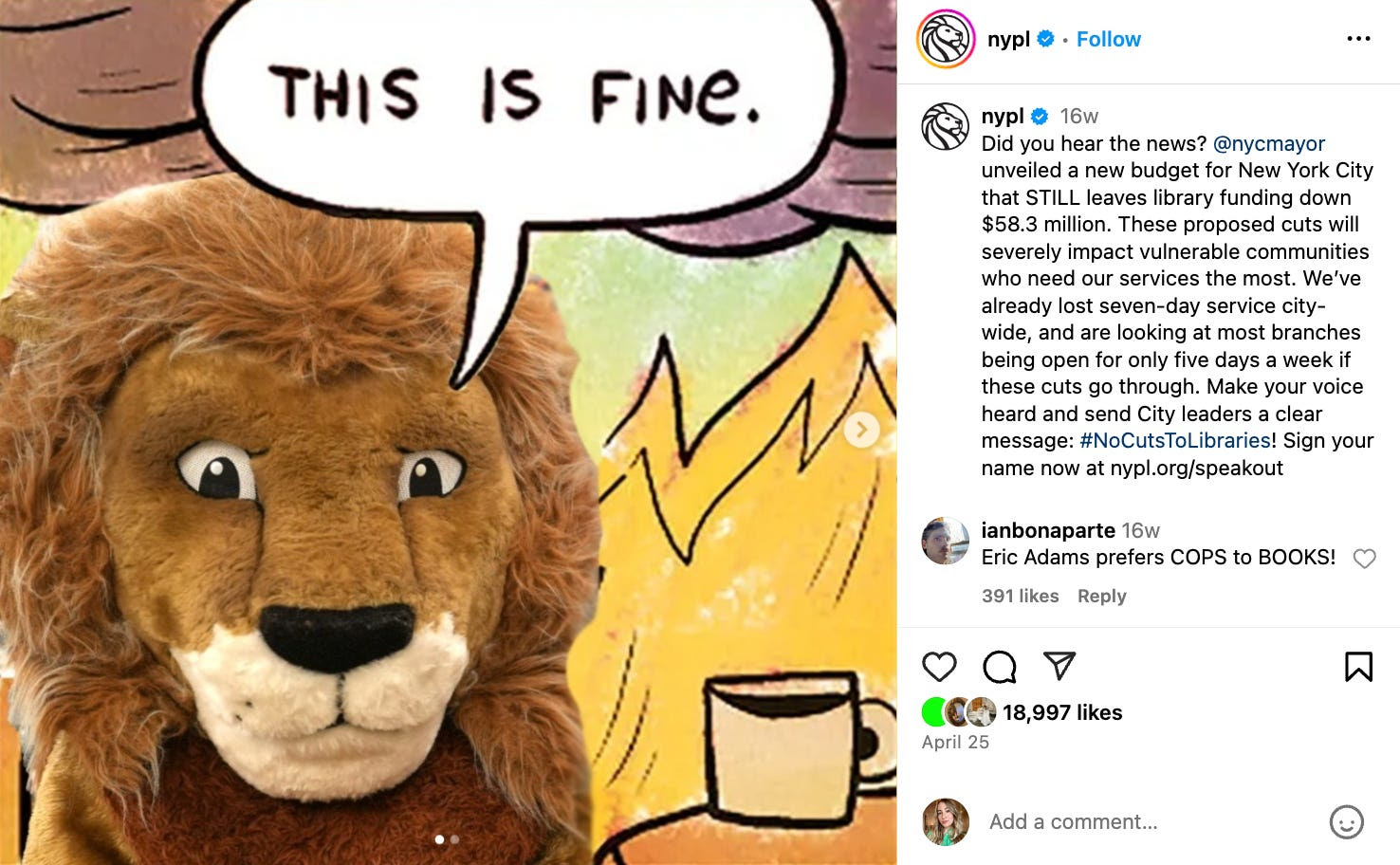
When facing budget cuts, NYPL posted a meme that quickly went viral. It wasn’t just funny—it made the issue easy to understand and easy to share.
Try this: Use memes or bold visuals to make announcements irresistible to share.
Service Employees International Union (SEIU)
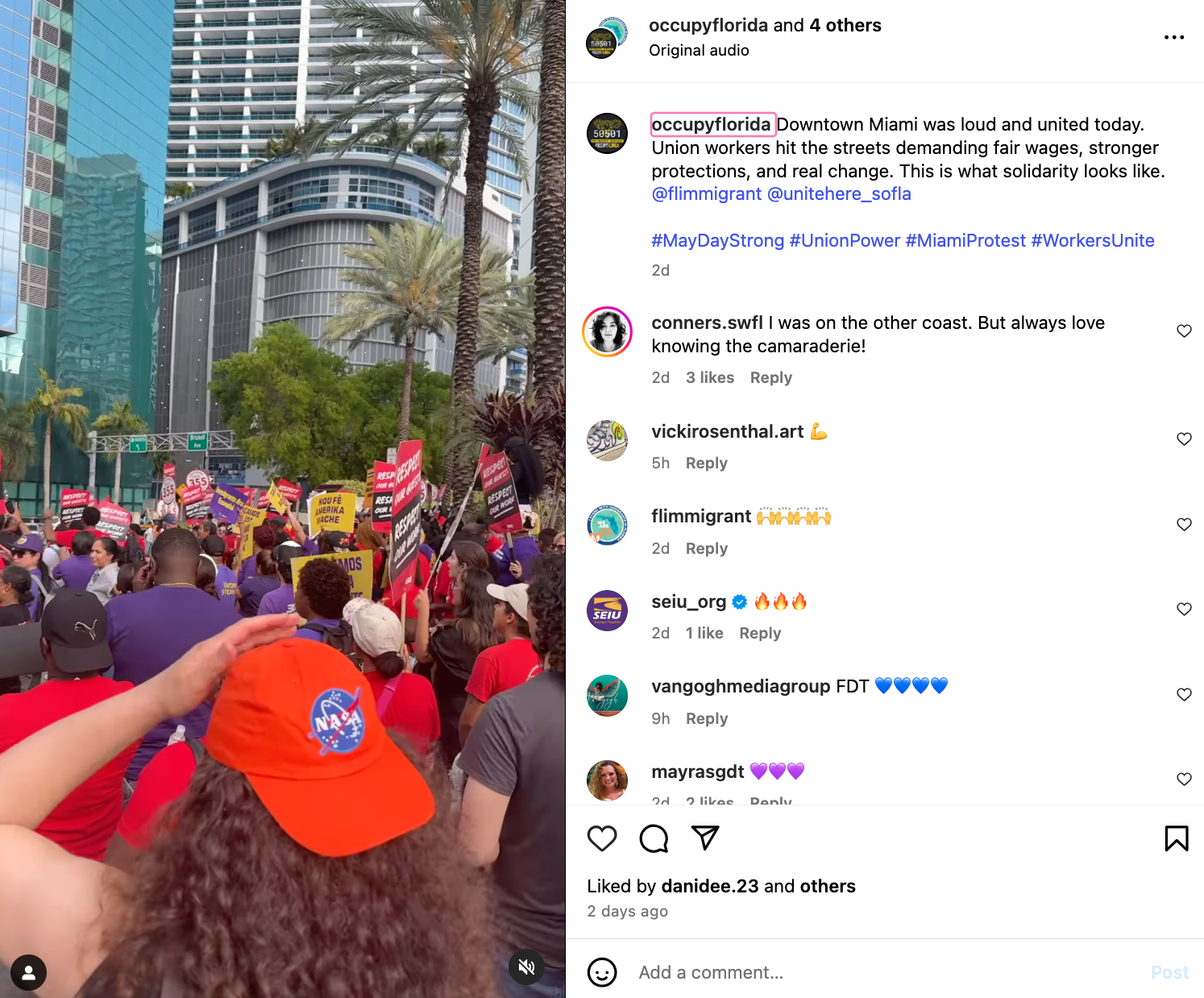
SEIU regularly posts photos and videos from protests, community events, and coalition work. These posts are more than just updates, they’re receipts that prove real work is happening.
Try this: Make photos and videos a must-have at every event. Your audience wants to see you in action. For maximum reach, tag your coalition partners at events or invite them as post collaborators.
Supply Chain Gals
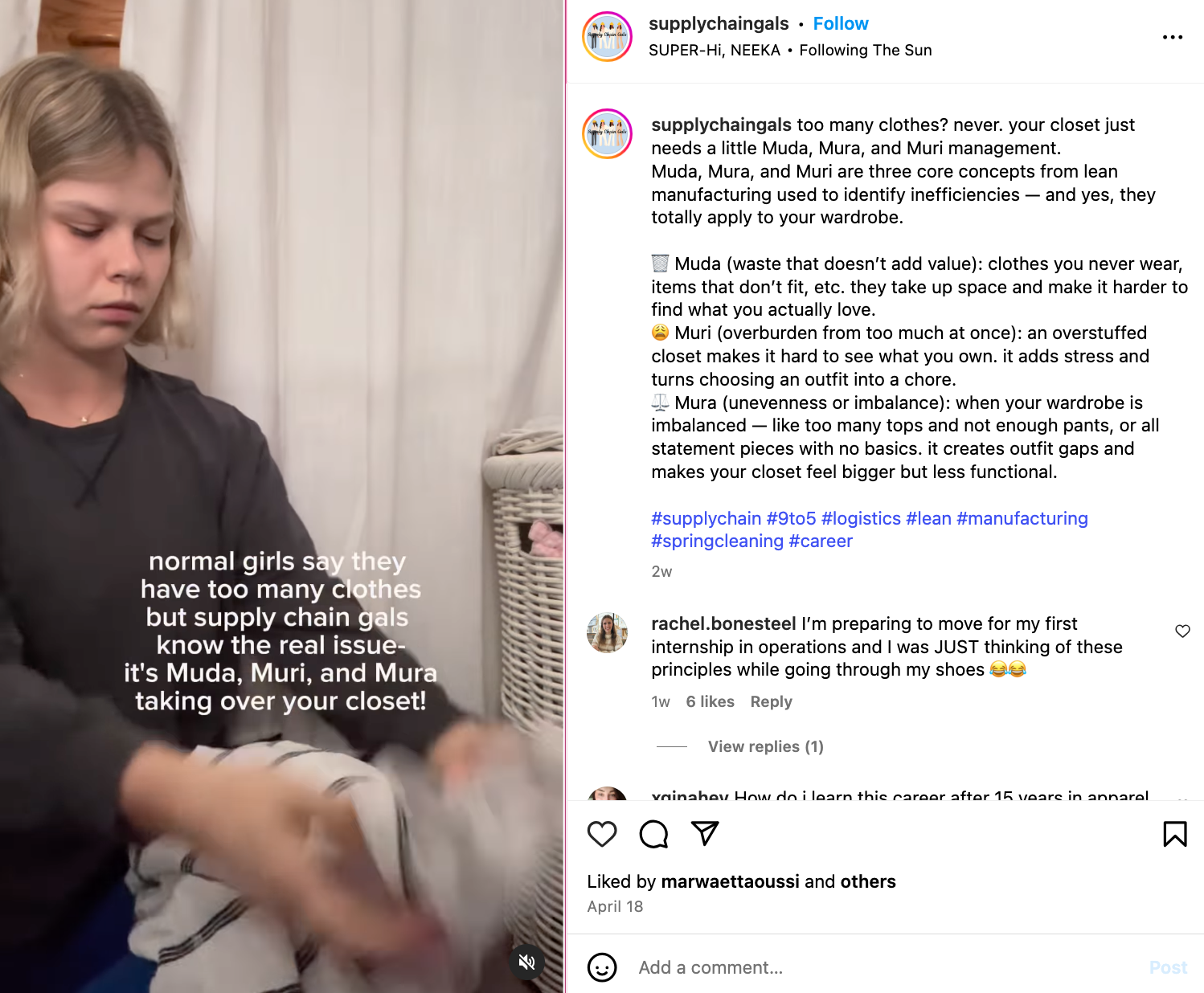
Supply Chain Gals use insider language to build connections, if you get it, you feel like part of the group; if you’re curious, you keep watching. Just like kids’ shows taught new words through jokes and skits, brands can teach their voice through humor and relatable moments.
Try this: Use insider language or humor in your posts and explain it in the caption.
Minnesota Freedom Fund
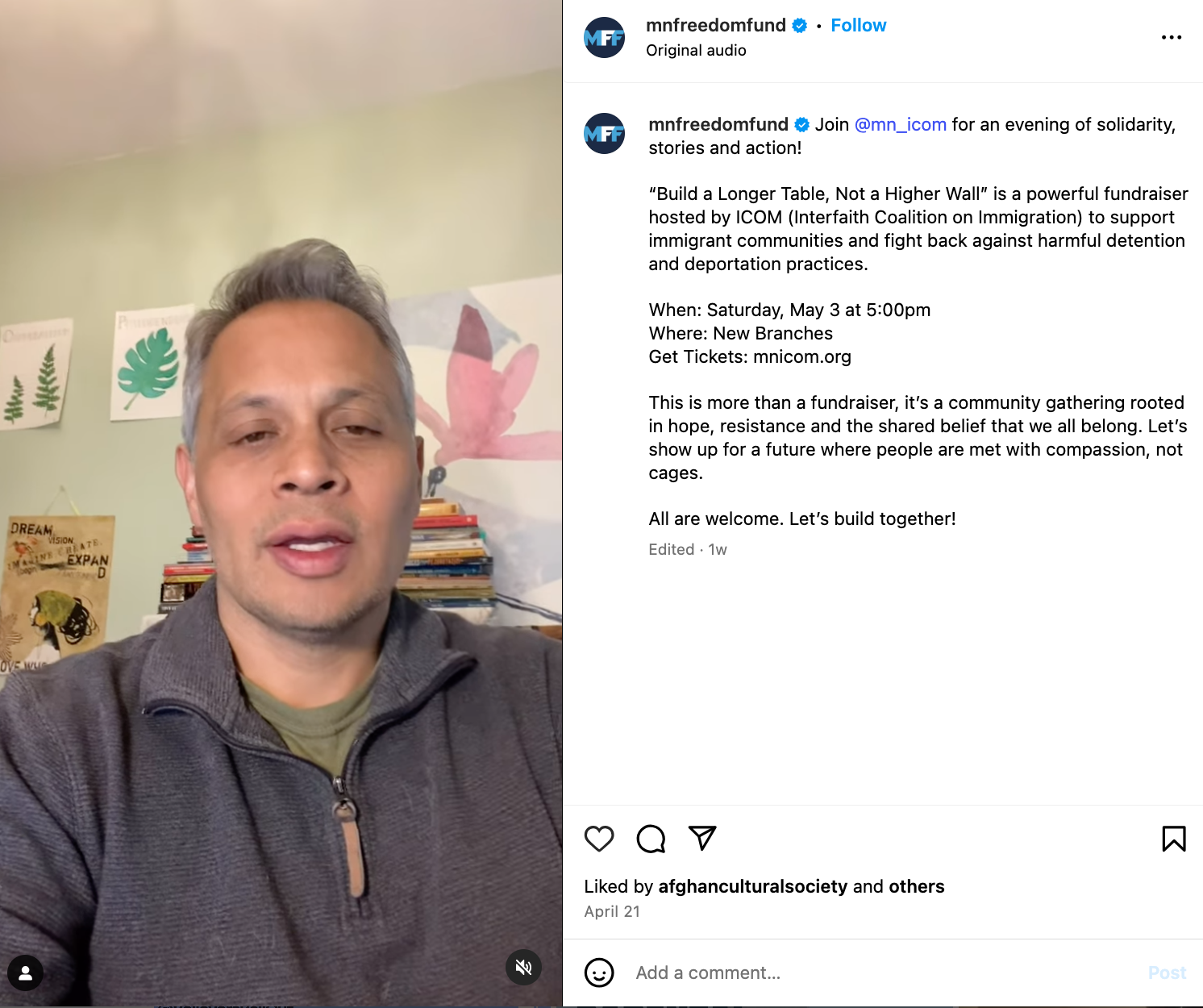
Minnesota Freedom Fund uses video testimonials to share news and updates. Having a person speak directly to the camera is a simple, effective way to grab attention and humanize your brand.
Try this: Ask team members or volunteers to record short videos for announcements and updates on social media.
LUSH

In 2021, LUSH made headlines by leaving social media entirely, citing concerns about online safety and climate impacts. They’re still thriving in retail spaces—with no posts in years.
Try this: If a channel isn’t serving your goals, it’s okay to step back. Burnout is real, and social media should be sustainable.
Conclusion
Social media can feel overwhelming, especially with a small team. But by focusing on a thoughtful first impression and making space for real connection can build an online presence that’s both meaningful and manageable.
Your audience wants to root for you. Give them a reason to stay and something worth sharing!
